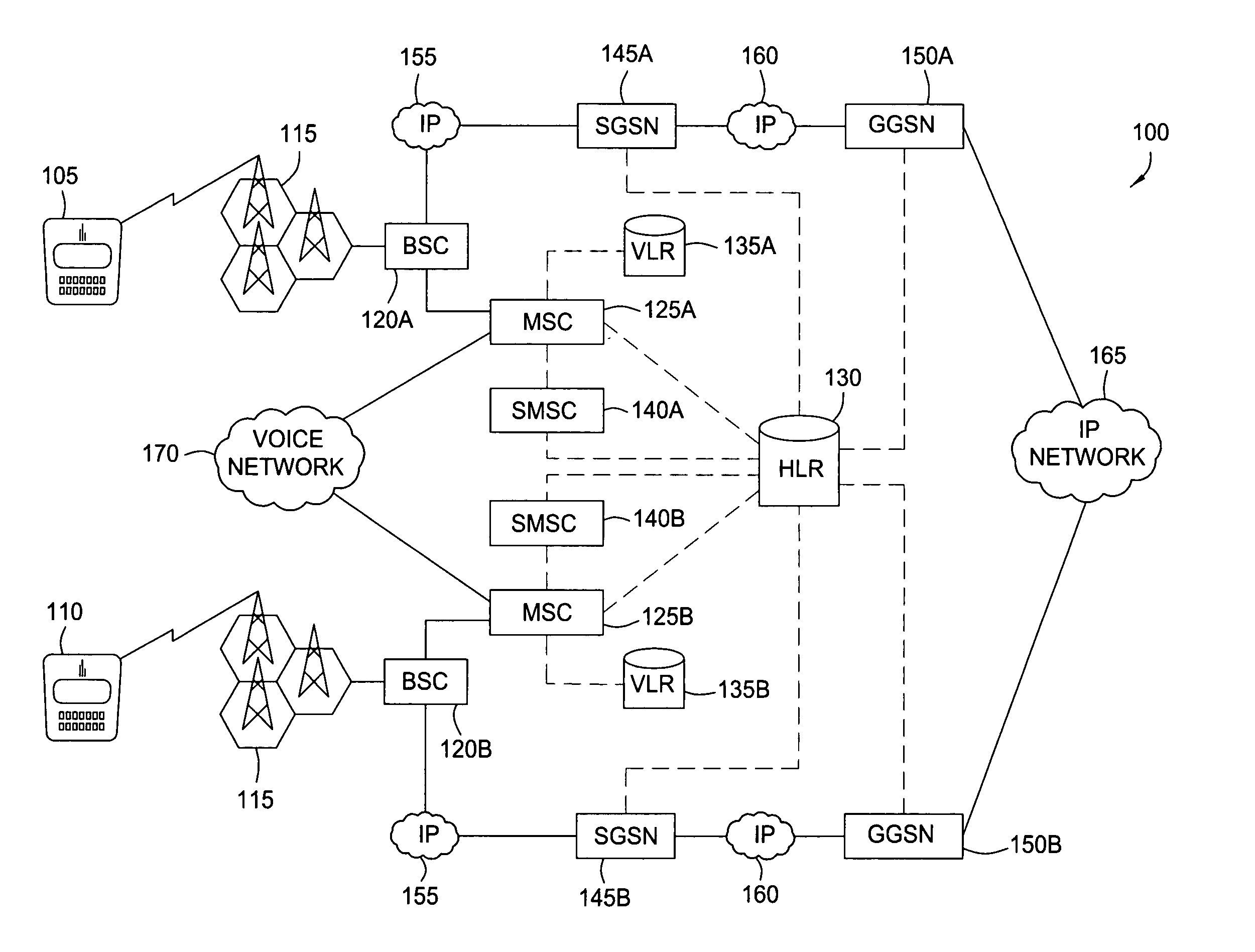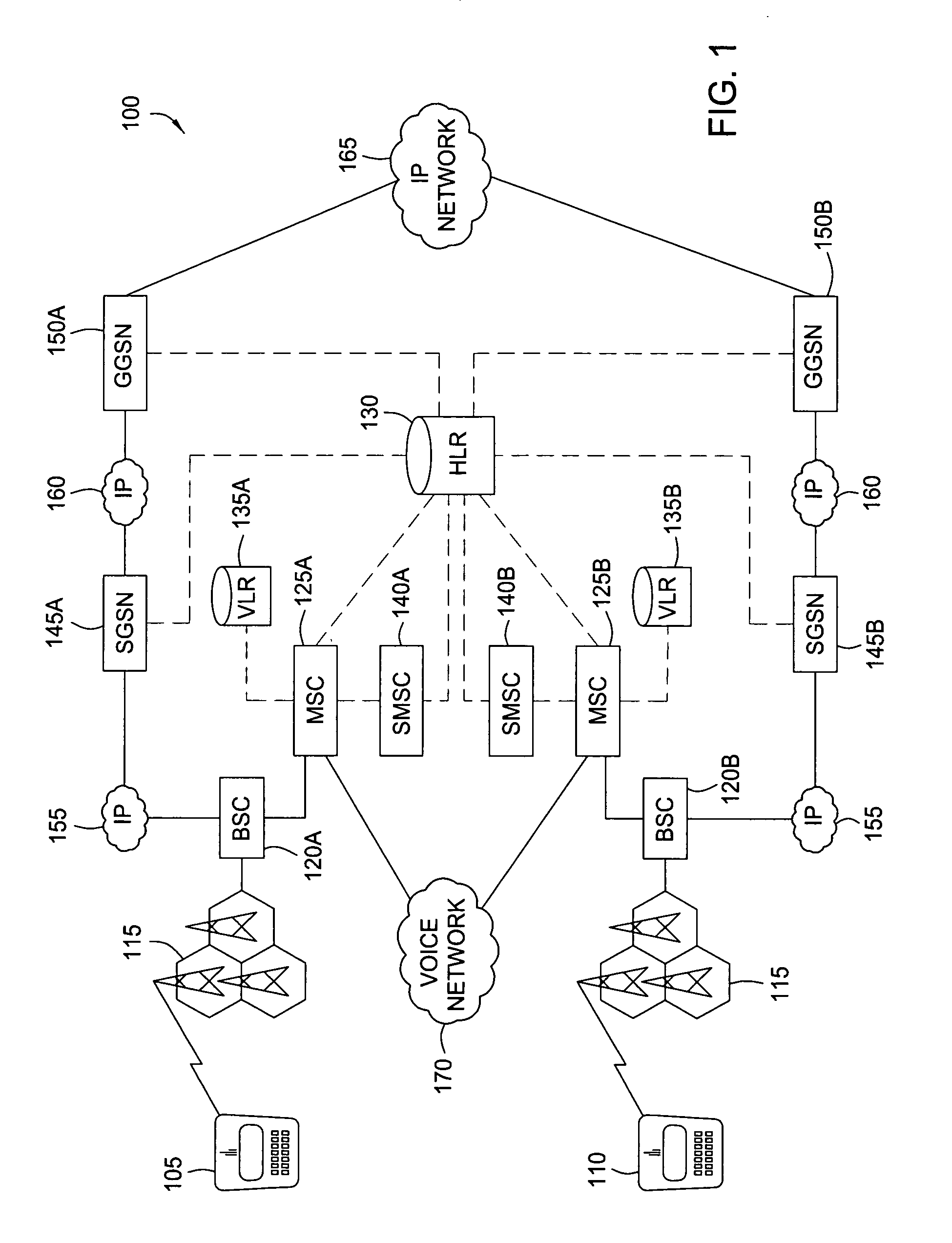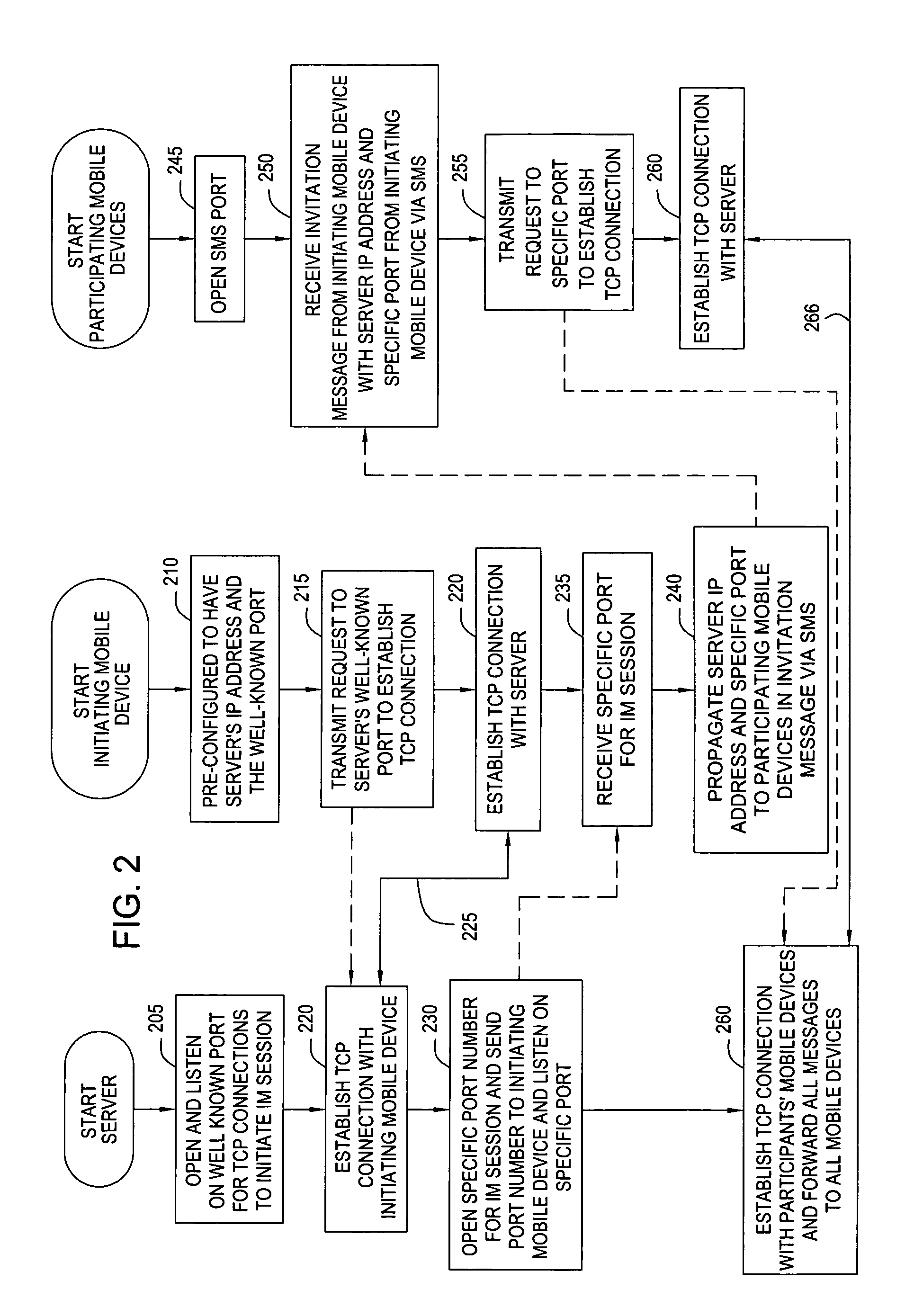Mobile instant messaging conferencing method and system
a mobile instant messaging and conferencing technology, applied in the field of mobile instant messaging conferencing method and system, can solve the problems of difficult mobile environment use, difficult to implement a commercially viable im system, peer-to-peer techniques such as those described in the p2p patent application also have limitations,
- Summary
- Abstract
- Description
- Claims
- Application Information
AI Technical Summary
Benefits of technology
Problems solved by technology
Method used
Image
Examples
Embodiment Construction
A. Network Environment
[0011]FIG. 1 depicts one environment to deploy an embodiment of the present invention. As depicted, the underlying digital mobile network system in this environment is the Global System for Mobile communications (GSM) 100 standard. Under the GSM standard, each of the mobile devices 105 and 110 includes a Subscriber Information Module (SIM) card that contains unique identification information that enables the GSM system to locate the mobile devices within the network and route data to them. A current commercial example of a mobile device (e.g., smartphone, PDA, handheld, etc.) that might be used in FIG. 1 could be Research In Motion's (RIM) BlackBerry handheld devices, which include a QWERTY keyboard to facilitate the typing of text. As depicted, a GSM architecture includes the following components: base transceiver stations (BTS) 115 and base station controllers (BSC) (120A or 120B) for managing the transmission of radio signals between the MSC (defined below) ...
PUM
 Login to View More
Login to View More Abstract
Description
Claims
Application Information
 Login to View More
Login to View More - R&D
- Intellectual Property
- Life Sciences
- Materials
- Tech Scout
- Unparalleled Data Quality
- Higher Quality Content
- 60% Fewer Hallucinations
Browse by: Latest US Patents, China's latest patents, Technical Efficacy Thesaurus, Application Domain, Technology Topic, Popular Technical Reports.
© 2025 PatSnap. All rights reserved.Legal|Privacy policy|Modern Slavery Act Transparency Statement|Sitemap|About US| Contact US: help@patsnap.com



